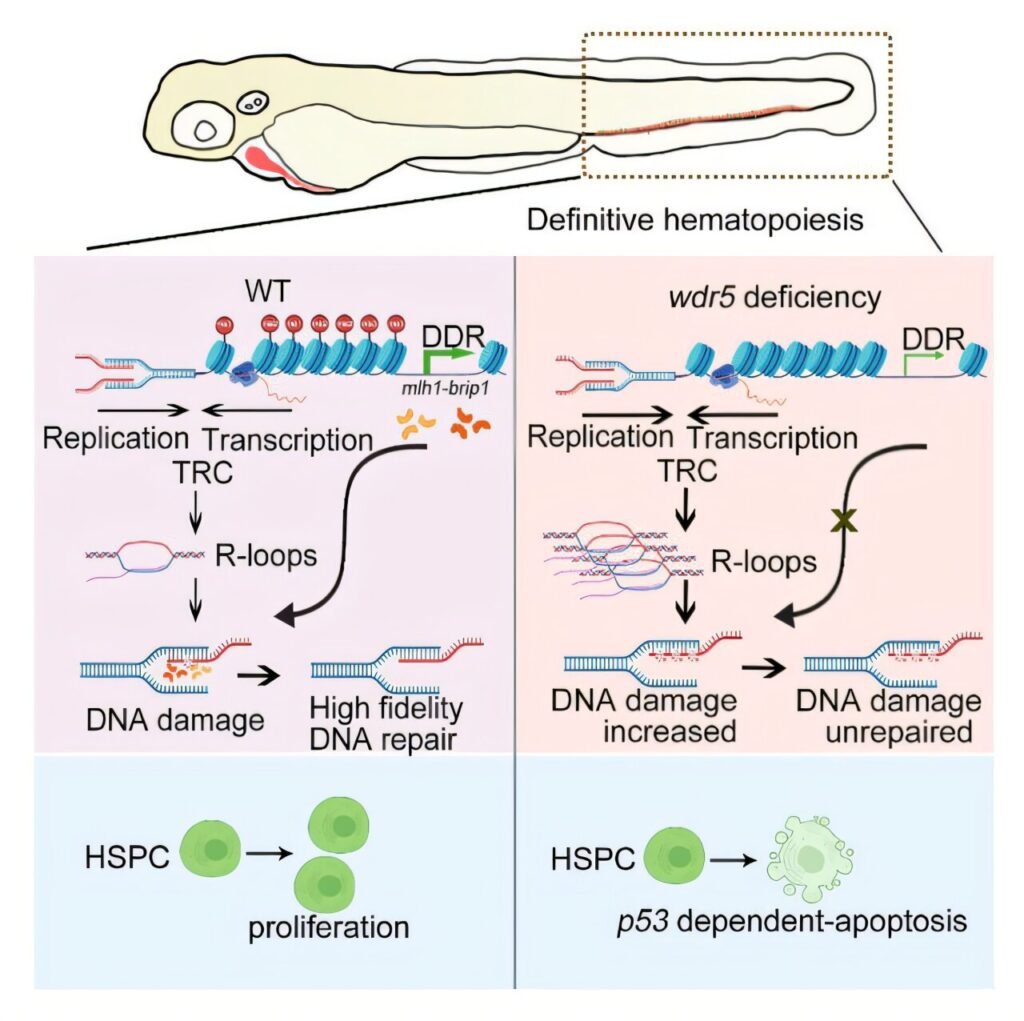A recent study conducted by Prof. Liu Feng from the Institute of Zoology of the Chinese Academy of Sciences has shed light on the critical role of the protein Wdr5 in safeguarding the survival and genomic integrity of hematopoietic stem and progenitor cells (HSPCs) during the early stages of embryonic development. The research findings were published in the prestigious journal, Proceedings of the National Academy of Sciences.
HSPCs serve as the building blocks of the blood system, originating in the aorta-gonad-mesonephros region during embryogenesis before migrating to the caudal hematopoietic tissue. Once settled in this location, they undergo rapid proliferation, a phase that makes them vulnerable to DNA damage and genomic instability.
Using zebrafish as a model organism, the study revealed that Wdr5 plays a crucial role in maintaining genomic stability by regulating a specific epigenetic mark known as H3K4 methylation. When Wdr5 was rendered ineffective, there was a significant decrease in the number of HSPCs, leading to widespread DNA damage and cell death.
A key finding of the research is that Wdr5 helps to reduce the accumulation of “R-loops,” unstable DNA structures that can trigger DNA damage. Moreover, in the absence of Wdr5, cells fail to activate the DNA damage response (DDR), a fundamental repair pathway. Restoring DDR-related genes, such as mlh1 and brip1, was able to reverse the defects in HSPCs, highlighting Wdr5’s role in coordinating repair mechanisms.
This study marks the first connection between H3K4 methylation and genome stability in HSPCs, providing valuable insights into HSPC development. The findings have the potential to inspire new strategies for regenerative medicine and the treatment of various blood disorders.
For further details, the research paper titled “Wdr5-mediated H3K4 methylation facilitates HSPC development via maintenance of genomic stability in zebrafish” can be accessed in the Proceedings of the National Academy of Sciences.
This research was made possible by the Chinese Academy of Sciences and underscores the importance of understanding the intricate mechanisms that govern the development and maintenance of vital cell populations in the body.


